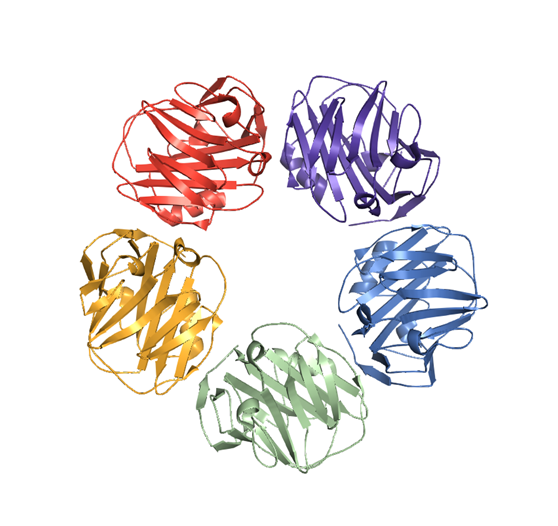Just like iOS and Android divide the MOS (Mobile Operating System) market, Cell therapy and Biologics bisects Cancer immunotherapy. Biologics is divided again into two branches, one is ICB (Immune Checkpoint Blockade) and the other is the immune engager.
Although they share the slogan "removing cancer cells using Host's own immune system", their mode of action is clearly distinguished.
In case of ICB, it rescues or optimizes pre-existing contacts to remove cancer. But immune engagers create brand-new contacts that have never exist before.
Therefore, if some tumors already have sufficient contacts, ICB based therapy would be a reasonable approach, whereas, if the contacts are insufficient, engager treatment is more persuasive option.
For the successful contact (immunological synapse) formation, neoantigen stimulus is required.
A neoantigen (more familiar words- mutant protein), specifically matched to T cell receptor.
In fact, mutations are continuously generated in all cells.
However, cancer cells with extremely fast turnover rates, carry more huge mutational burden. The term ‘tumor mutational burden (TMB)’ is used to quantify this, literally indicating the frequency of mutations in cancer cells.
Another term associated with TMB is microsatellite instability (MSI), which is an indicator of DNA repair system efficiency. If the repair system is stable enough, the mutant frequency would be low because most of the mutations generated are successfully corrected, but if the repair machinery is broken, the somatic mutations are rapidly accumulated, subsequently contributes to an increase of neoantigen mediated contacts.
This simple, but very reasonable hypothesis that the higher MSI, the higher TMB, and the higher TMB, the better ICB response, celebrates its payday with the pan-tumor FDA approval of pembrolizumab in May 2017 (which is the first approval case for unspecified solid tumors based on specific biomarker information).
However, no suitable (immunotherapeutic) treatment options are approved for the MSI-low patients especially for solid-tumor case yet. The role of immune engager, in this context, is the matter of interest.
면역항암치료제 하면 보통은 세포치료제와 단백질치료제 이렇게 둘을 떠올린다.
MOS 시장을 iOS와 안드로이드가 양분하고 있는 것처럼, 단백질치료제는 다시 두 갈래로 나뉘게 되는데
한 갈래는 ICB(immune checkpoint blockade)가, 다른 갈래는 immune engager가 차지한다.
‘Host의 면역시스템을 이용하여 암세포를 제거한다’는 본질적인 목표는 ICB와 engager가 공유하지만,
두 치료제의 작용기전은 명확하게 구분된다.
ICB가 기존에 존재하는 어떤 접점을 조절하여 면역시스템을 회복시키고 이를 통해 암세포를 제거하는 방식이라면,
immune engager의 경우 기존에는 존재하지 않았던 접점을 새롭게 만들어내서 암세포를 제거하는 방식을 취한다.
그렇기 때문에 만약 어떤 암종이 이미 충분한 접점을 가지고 있다고 판단될 경우에는 ICB를 시도하는 것이 더 합리적인 선택이 되고, 반대로 접점이 부족하다고 판단될 경우에는 engager를 사용한 치료법이 더 설득력을 가지게 되는 것이다.
이러한 ‘접점’의 역할을 하는 Immunological synapse가 성공적으로 형성되기 위해서는 T 세포 수용체에 정확하게 matching 되는 neoantigen. 좀 더 친숙한 표현으로는 ‘돌연변이 단백질’이 암세포로부터 충분히 제공되어야 한다.
사실 돌연변이는 암세포를 포함한 모든 세포에서 계속적으로 만들어지고 있지만, 그 특성상 turnover가 비정상적으로 빠른 암세포에서 유전체의 불안정성에 의한 돌연변이의 burden이 기하급수적으로 올라가게 된다. 이를 정량하는 지표로 tumor mutational burden (TMB)이라는 용어가 사용되는데, 말 그대로 암세포가 가지고 있는 돌연변이의 빈도를 나타낸다.
TMB와 연관된 또 다른 용어로 MSI (microsatellite instability, 미소부수체 불안정성)가 있는데, MSI는 tumor에서 발생하는 돌연변이를 수리하는 repair system이 정상적인가를 판단하는 지표로 사용된다. Repair system이 안정적일 경우에는 발생하는 대부분의 돌연변이가 성공적으로 교정되기 때문에 돌연변이의 빈도가 낮지만, repair system이 망가져 있을 경우에는 돌연변이의 빈도가 급속도로 높아지게 되고, 이는 결과적으로 neoantigen의 증가 즉 앞서 설명했던 접점의 증가에 기여하게 된다.
이러한 관점에서, MSI가 높을수록, TMB가 많아질수록 ICB가 잘 작동할 것이라는, 아주 합리적인 가설은 2017년 5월 pembrolizumab의 pan-solid tumor에 대한 승인(특정 biomarker를 기반으로 불특정다수 암종에 대해 허가를 받은 첫 케이스였음)으로 결실을 맺게 되고, 이에 탄력을 받아 MSI-high인 다양한 암종에서 PD-1/PD-L1 표적치료제가 하나씩 승인을 받기 시작하면서 ICB의 치료영역을 넓혀가고 있다.
하지만 MSI-low, 즉 면역세포와 암세포의 접점이 상대적으로 적어 ICB의 충분한 효능을 기대하기 어려운 환자군에 대한 의학적인 수요는 여전히 충족되지 못한 채 남아있어서, 해당 market에서 engager therapy가 어떤 역할을 할 수 있을지 관심이 집중되고 있다.

* 그림 출처 : https://www.blincytohcp.com/rr/mechanism-of-action
'Immunology' 카테고리의 다른 글
| History of immune engager (0) | 2022.11.10 |
|---|---|
| Introduction to cancer immunotherapy (0) | 2022.11.10 |
